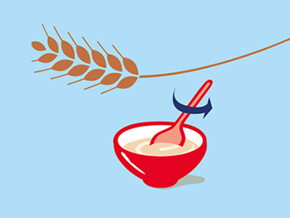
How Do I Keep Salt In My Child’s Diet At A Healthy Level?
Salt In Toddler's Diet
IMPORTANT NOTICE: The World Health Organization (WHO) recommends exclusive breastfeeding for the first 6 months and continued breastfeeding for as long as possible. Growing up milks are formulated to meet nutrition needs of healthy young children older than 1 year and should not be fed to infants.
A very small amount of salt in a child’s diet is enough to supply his body with his need of sodium which is quite necessary for healthy muscle, stomach and nerve function, and that’s without exposing him to the myriad hazards of excess salt, such as hypertension, obesity and heart diseases.
To help your child get the health benefits of salt without running any risk, follow these simple instructions:
- Read the nutrition facts label on packaged and canned food you buy every day. Compare between the available options of cereals, breads or pasta and choose those that are lower in salt.
- Watch out for the prepared dressings and sauces you toss on your child’s meal of pasta and other.
- Get your child into the habit of snacking on fresh low-sodium fruits and veggies, such as carrots and kale.
- Limit your tot’s consumption of deli meats which are high in salt, to special occasions.
- Go easy on soy sauce, mustard and mayonnaise.
- Reduce the amount of salt you add to your toddler’s recipes; use spices, seasonings, fresh herbs, garlic and ginger, instead.
- Keep processed snacks, like potato chips, crackers and pop corn away from your child.
- Watch out for the salt shaker.
- When eating at a restaurant, check the ingredients of each plate before ordering for your child. Try your best to go for the options that are lower in added salt.
Last but not least, remember to be a role model; follow a low-salt diet and demonstrate healthy eating habits yourself. Your little munchkin learns from you and is ready to follow your lead!
Read More: Advantages Of Home Cooking For Kids




















